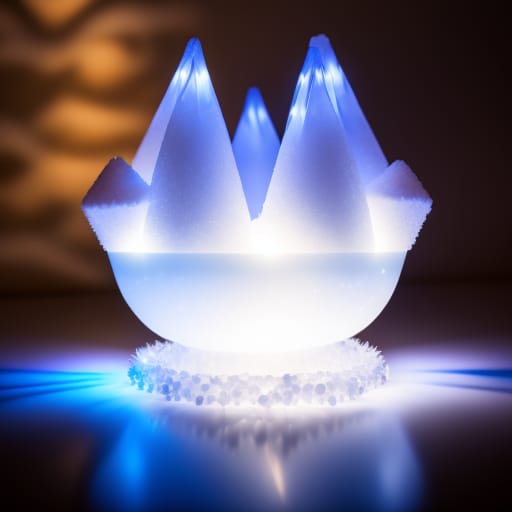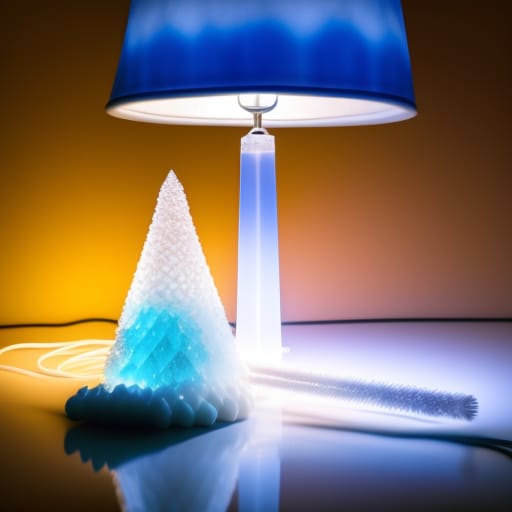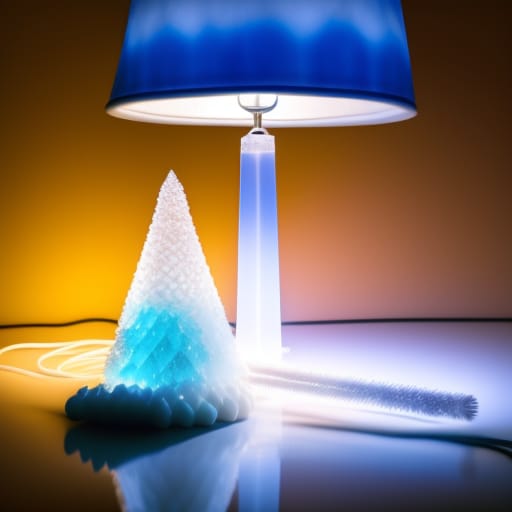
Growing crystals is a fascinating science that allows you to create beautiful, structured minerals in your own home. While it takes some specialty equipment and ingredients, crystal growing can be an enjoyable hobby for all ages. In this beginner’s guide, we’ll explore the essential materials you need to get started with basic crystal growing.

Table of Contents
Crystal growing, also known as crystallization or recrystallization, is the process of developing a solid crystalline structure from a solution. As the dissolved particles come out of the solution, they align in an organized, repeating pattern that makes up the facets of the crystal.
Crystal growing has several benefits:
While advanced crystal growing setups exist, the basic requirements are:
The rest of this guide will break down the key materials you need to check these requirement boxes and grow your own crystals!
The first step is selecting what type of crystalline solid you want to grow. Some common options suitable for beginners include:
Table salt (sodium chloride): Table salt is one of the easiest starting crystals. It forms cubic crystals.
See also How to Make a Moon Phases Flip CardBorax (sodium tetraborate): Borax forms platonic, tetrahedral crystals.
Potassium alum: Alum tends to form octahedral or cubic crystals depending on conditions.
Copper sulfate: This forms deep blue prismatic crystals.
Epsom salts (magnesium sulfate): Epsom salt crystals have a needle-like shape.
Urea: This common organic compound produces long, thin crystals.
When choosing which crystal type to grow, consider:
In order to grow large, ordered crystals, you need tiny seed crystals to get the process started. These micro-crystals provide a foundation that additional particles can attach to in an aligned structure.
Ways to acquire seed crystals:
Ideally, seed crystals should be:
The next step is selecting a suitable solvent – the liquid that will dissolve your solid crystal compound.
Some common options include:
Ideal solvent properties:
The solvent should be heated and saturated with your chosen crystal compound. This means the maximum amount of solute is dissolved at a given temperature.

| Container Type | Pros | Cons |
|---|---|---|
| Glass jar | Reusable, chemical resistant | Potential for nucleation on glass surface |
| Beaker | Allows full visibility | Can be more expensive |
| Plastic bottle | Inexpensive, disposable | Can absorb chemicals from solution |
| Crystallization dish | Made specifically for crystal growth | Specialized equipment cost |
The container holds the solution while the crystals grow over time. Some options for beginner crystal growers include:
Ideal features of a crystal growth container:
Growing large, ordered crystals requires a very stable, controlled environment. Some key factors include:
With careful control over these variables, you can create an ideal setting for crystal growth.
While basic crystals can be grown with household materials, advanced growers use specialized equipment:
Investing in this type of equipment can take your crystal growth to the next level.
Image showing crystal formation over time
Finally, successful crystal growth requires patience. It can take hours to days for large crystals to fully form in the solution. Avoid prematurely disturbing or handling the crystals. Allow the process to slowly occur undisturbed.
See also Space-themed Baking Challenge Vs. Space-themed Cooking Challenge Project for KidsTo wrap up, here are some key tips to get started:
With the right materials and these tips, you’ll be growing beautiful crystals in no time!

While it requires specialized equipment and care, crystal growing is an engaging hobby that lets you produce gorgeous crystalline structures. This guide covered all the essential materials from chemical solutions to containers to environmental controls. The crystal growth process allows you to learn about mineral forms and chemistry hands-on. Starting with basic compounds and homemade setups, you can expand your skills over time. We hope this beginner’s overview gave you all the info you need to get started growing your own crystals!
What are the best materials for beginners to start crystal growing?
Some of the easiest and most accessible materials for crystal growing beginners include table salt (sodium chloride), borax (sodium tetraborate), alum (potassium aluminum sulfate), and Epsom salts (magnesium sulfate). These form beautiful cubic, tetrahedral, and octahedral crystals with basic household materials.
What type of container is ideal for crystal growth?
The best crystal growing containers are made of inert materials like glass or plastic. Look for a transparent jar or beaker to allow visibility, with a sealable lid and large enough capacity to accommodate crystal formation. Avoid containers with defects that can interfere with the crystal structure.
What temperature is ideal for crystal formation?
Proper temperature control is critical for crystal growth. First, heat the solution to just below boiling to dissolve and saturate the solute. Then allow the solution to slowly cool to create supersaturation and enable crystal formation. Maintain a stable, consistent temperature as the crystals grow.
How can I reduce vibrations for ideal crystal growing conditions?
Limiting environmental vibrations helps grow well-structured crystals. Isolate your crystallization jars by placing them on foam pads or surfaces that absorb vibrations. Avoid growing crystals near loud sounds, moving air currents, or other sources of kinetic energy.
How long does it take for crystals to form?
Be patient! Depending on their type and size, crystals can take hours to multiple days to fully grow in the solution. Avoid prematurely disturbing or handling the crystals. Provide a stable environment and allow the crystal growth process sufficient time to naturally occur.